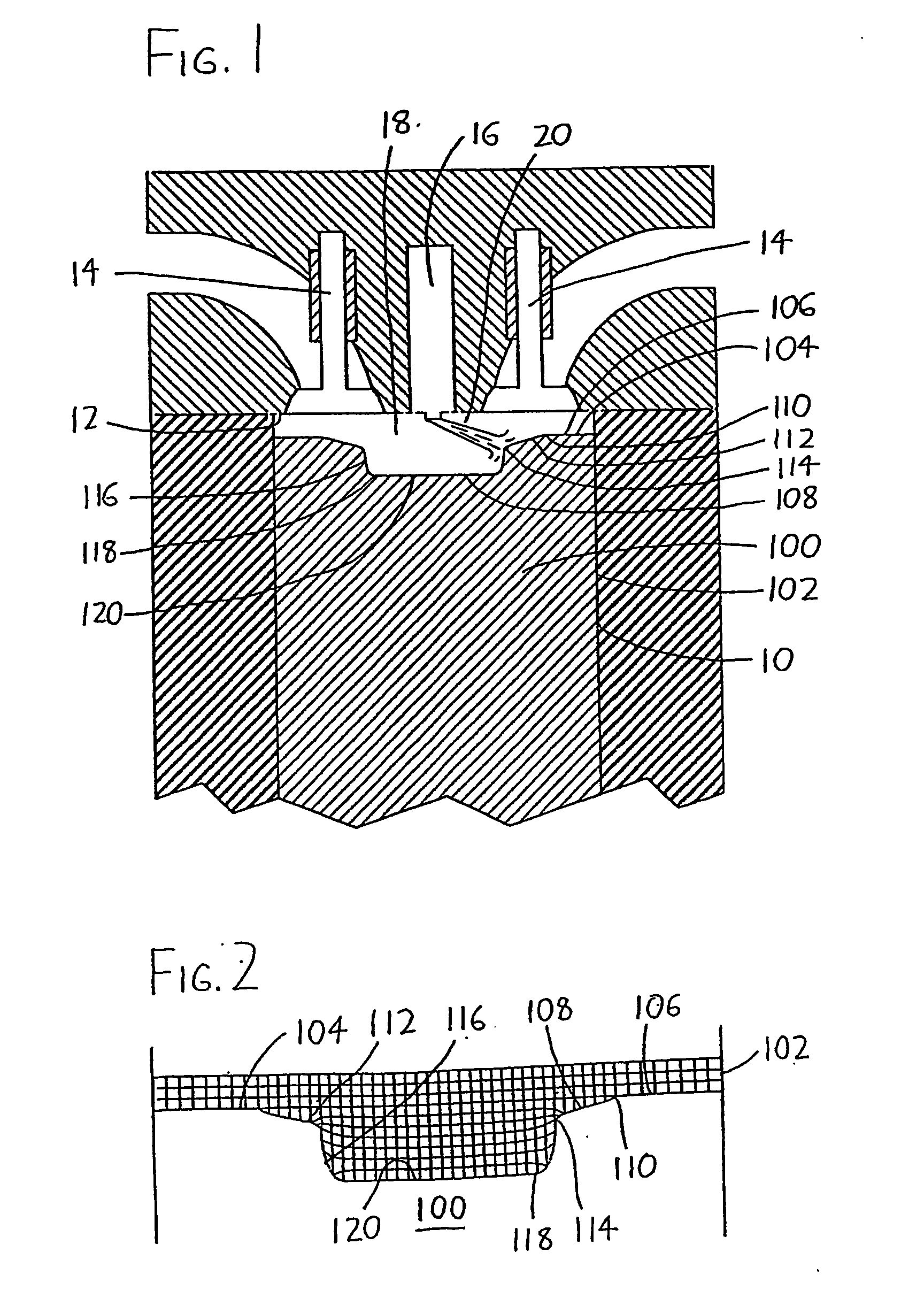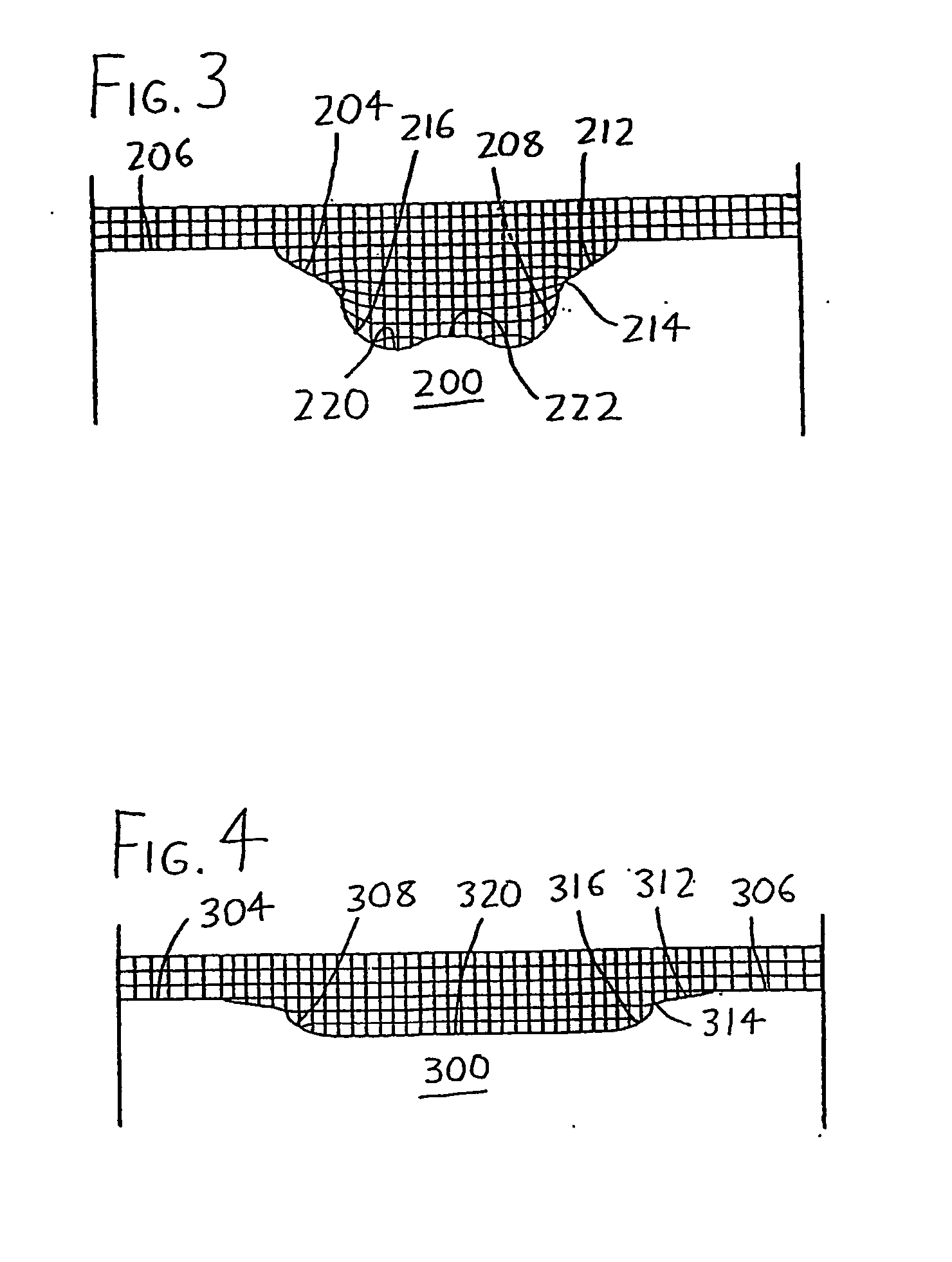Piston/combustion chamber configurations for enhanced ci engine performace
a technology of combustion chamber and engine, which is applied in the direction of combustion engines, cylinders, machines/engines, etc., can solve the problems of difficult control of all variables, difficult to predict the effect of different chamber configurations, and large squish region, so as to achieve significant emissions reduction
- Summary
- Abstract
- Description
- Claims
- Application Information
AI Technical Summary
Benefits of technology
Problems solved by technology
Method used
Image
Examples
Embodiment Construction
[0020] Preferred versions of the piston and combustion chamber designs of the invention will now be described with reference to the piston face configurations of FIGS. 2-4, any of which may be utilized in a diesel engine cylinder and combustion chamber such as the one illustrated in FIG. 1 (which utilizes a piston 100 having the piston face configuration in FIG. 2). The cylinder is defined by cylinder walls 10 along which the piston 100 slides, with the piston having a piston side 102 surrounding a piston face 104. During engine operation, the piston face 104 alternately approaches and retreats from the cylinder head 12, wherein intake and exhaust valves 14 are provided along with an injector 16. The space between the piston face 104, cylinder walls 10, and cylinder head 12 defines the combustion chamber 18 wherein the combustion event occurs after the injector 16 injects a fuel plume 20 into the combustion chamber 18. Note in FIG. 1, the injector 16 is shown injecting one fuel plum...
PUM
 Login to View More
Login to View More Abstract
Description
Claims
Application Information
 Login to View More
Login to View More - R&D
- Intellectual Property
- Life Sciences
- Materials
- Tech Scout
- Unparalleled Data Quality
- Higher Quality Content
- 60% Fewer Hallucinations
Browse by: Latest US Patents, China's latest patents, Technical Efficacy Thesaurus, Application Domain, Technology Topic, Popular Technical Reports.
© 2025 PatSnap. All rights reserved.Legal|Privacy policy|Modern Slavery Act Transparency Statement|Sitemap|About US| Contact US: help@patsnap.com



